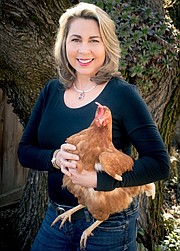Ripe for the picking
There is nothing like the taste of a vine-ripened tomato. But did you know that you can pick tomatoes just as they start to color and still get similar results? It’s true. Mature tomatoes will continue to ripen after they are harvested.
Here are a few more harvesting tips to help you get the most from your garden’s bounty:
Know when to harvest. For optimal taste and texture, it’s critical to know when to harvest your crops. Some vegetables, like tomatoes mentioned above, can ripen on or off the vine. But other vegetables, like eggplants, cucumbers, and bell peppers, will only ripen while still on the vine. If these are picked underripe, they won’t ripen any further. Most seed packets provide detailed information on harvesting or check online for guidance.
Pick Frequently. Regular harvesting encourages most plants to produce more fruit, and by removing mature fruit, nutrients can be diverted to developing produce.
Do a “taste-test.” Sometimes it can be difficult to tell if a vegetable is ripe — like green varieties of tomatoes. Taste your crops for ripeness. This will help you gauge their readiness. Ripe produce should be flavorful, not bland or mealy.
Harvest in the morning. Early morning is the best time to harvest, as the plants are well-hydrated and temperatures are cooling. Picking early helps to preserve flavors and nutrients.
Use sharp tools. When harvesting crops, use gardening snips, scissors, or a sharp knife. It’s easier than twisting or pulling, which can damage the plant or bruise the produce.
Always handle your produce with care. TLC goes a long way here. Avoid bruising or damaging your produce. Place harvested items in a shallow basket or container to prevent crushing. The less you handle the vegetables, the longer they will last in storage.
Storing your crops properly after harvesting will extend their shelf life. Some vegetables do best refrigerated, while others require a cool, dry place. Here are a few harvest and storing tips for common garden veggies:
Cucumbers should be picked when they are bright green or their designated color and stored in a cool area of about 55 degrees. Refrigeration is possible, but if they are stored below 40 degrees they can become water-soaked and pitted.
Eggplant should be harvested while the fruit’s color is shiny and bright. A dull color and softness mean the eggplant is overmature and past its peak. Like cucumbers, eggplant should be stored at 55 degrees and it can be stored in the fridge for a few days. Eggplant will pit, go bronze in color and the interior will be brown if stored for long periods below 50 degrees.
Zucchini/summer squash should be picked when they are small — about 6 to 8 inches long with tender skin. Harvest frequently. The more you harvest summer squash the more it will produce, so make sure you have lots of friends who are willing to take the extras off your hands. Store summer squash in a cool location, around 55 degrees; don’t store it in the fridge for longer than four days.
Winter squash should be harvested before frost when the rind is hard and difficult to puncture with your fingernail. Stored in a cool and dry location. Winter squash will last anywhere from two to six months depending on the variety.
Bell peppers should be harvested when the fruits reach the desired color and size for the variety. These should be stored in a cool location and will keep in the fridge for a few days. If they are stored below 45 degrees, they will develop pitting.
Tomatoes should be harvested when they reach their designated color. They can be picked when they start to color and ripen off the vine. They should be stored in a cool location out of direct sunlight and NEVER stored in the fridge.
Keep a journal of your harvests, noting what worked well and what didn't. This will help you make adjustments for future years. Most importantly, enjoy the bounty from your garden!
• • •
Candace Godwin is a Certified Idaho Master Gardener. The University of Idaho Extension, Kootenai County Idaho Master Gardener program is located in the UI Research Park, 958 S. Lochsa St., in Post Falls. Learn about us at https://www.uidaho.edu/extension/county/kootenai/garden or on Facebook. Visit us in person, email us at kootenaimg@uidaho.edu or call us at 208-292-2525. IMG services are free to the public.



